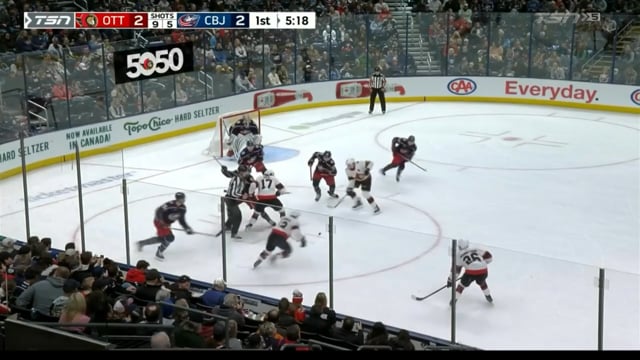
Why are the first three steps important?
If our player and the opponent both recognize the pattern of play & pick the most effective movement solution, then it comes down to who can use their legs/body to create an advantage to fight for space and/or the loose puck.
When coaches ask questions to other coaches about players; they usually revolve around:
- How is her/his level of ‘compete’?
- Does she/he have hockey sense?
- Is she/he a good person/teammate?
- Can she/he skate…AKA, how are the first three steps?
Example of DeBrincat Using First Three Strides to Win Puck on Faceoff
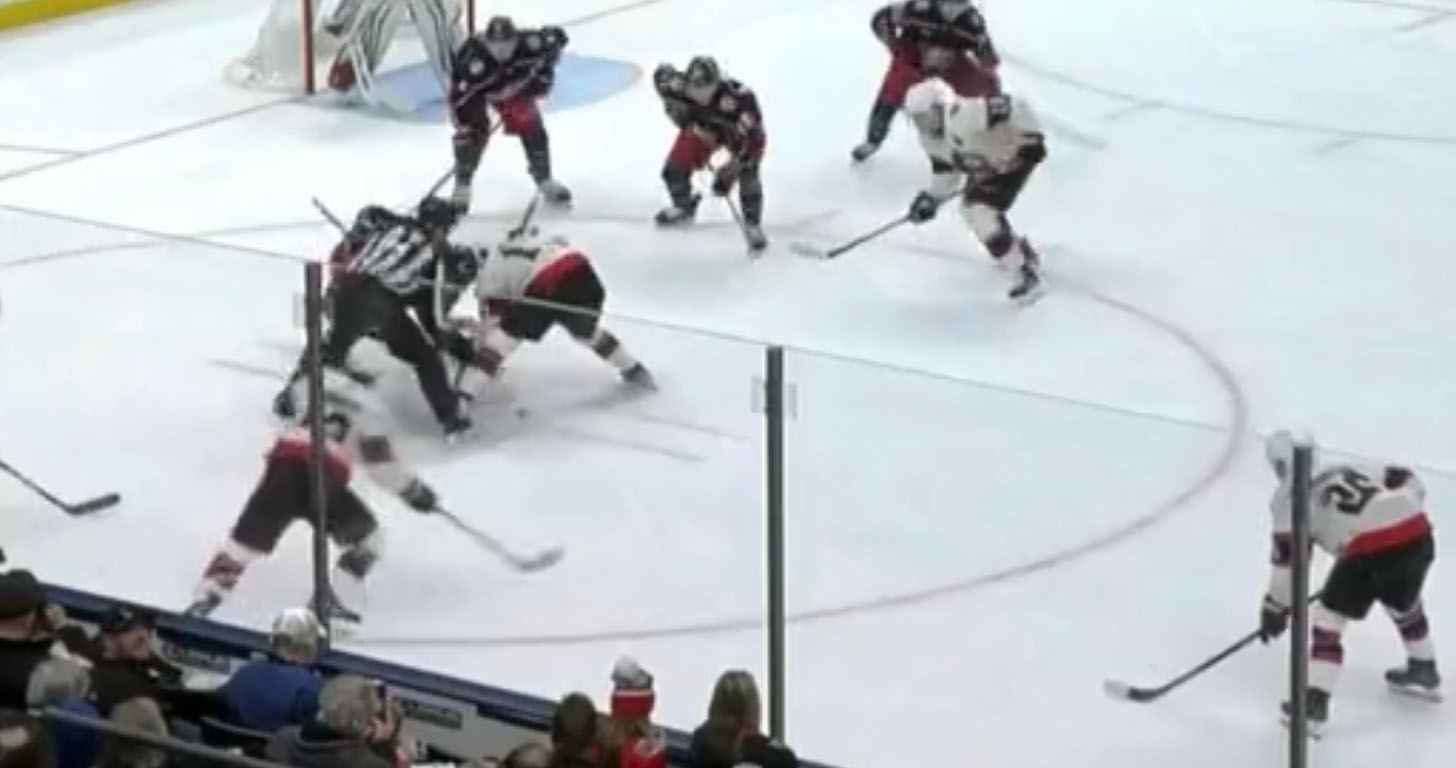
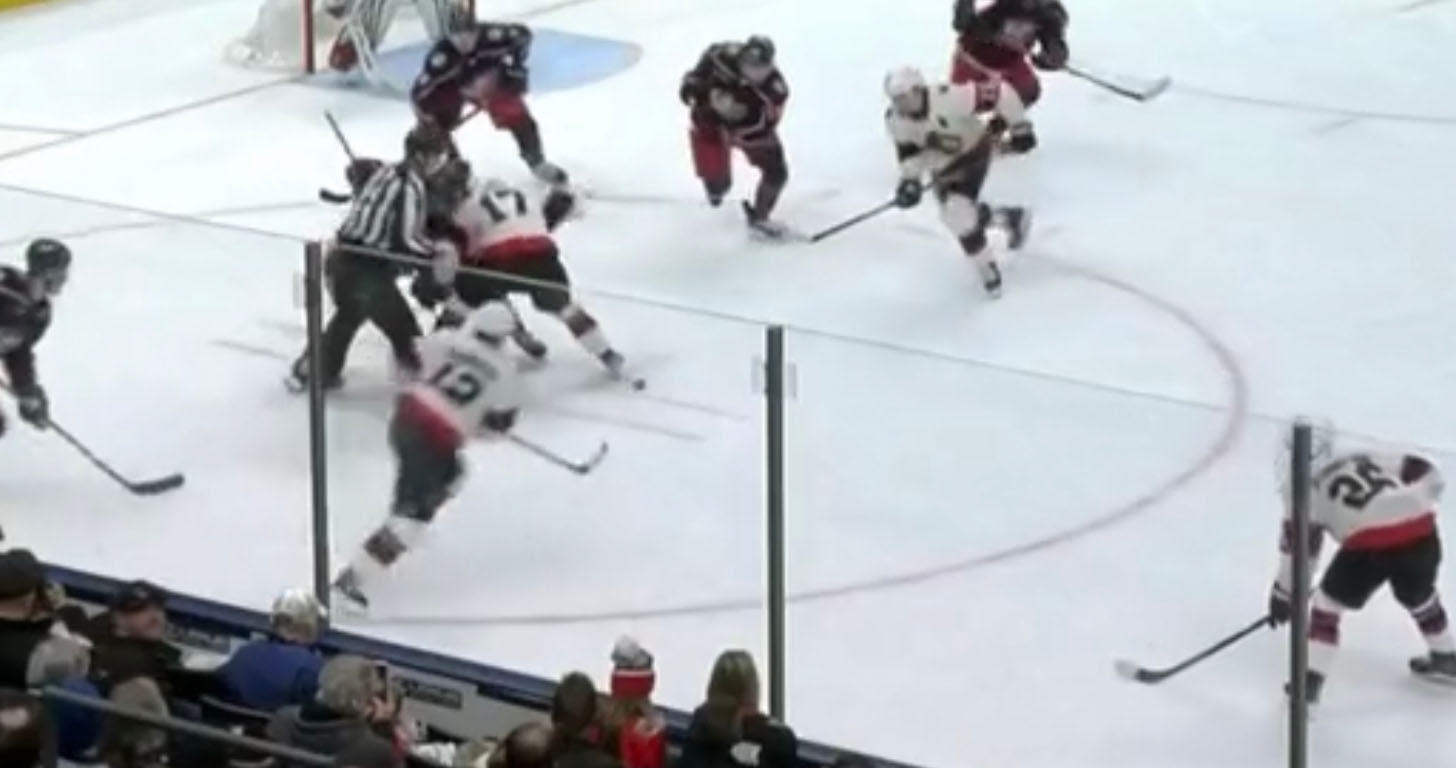
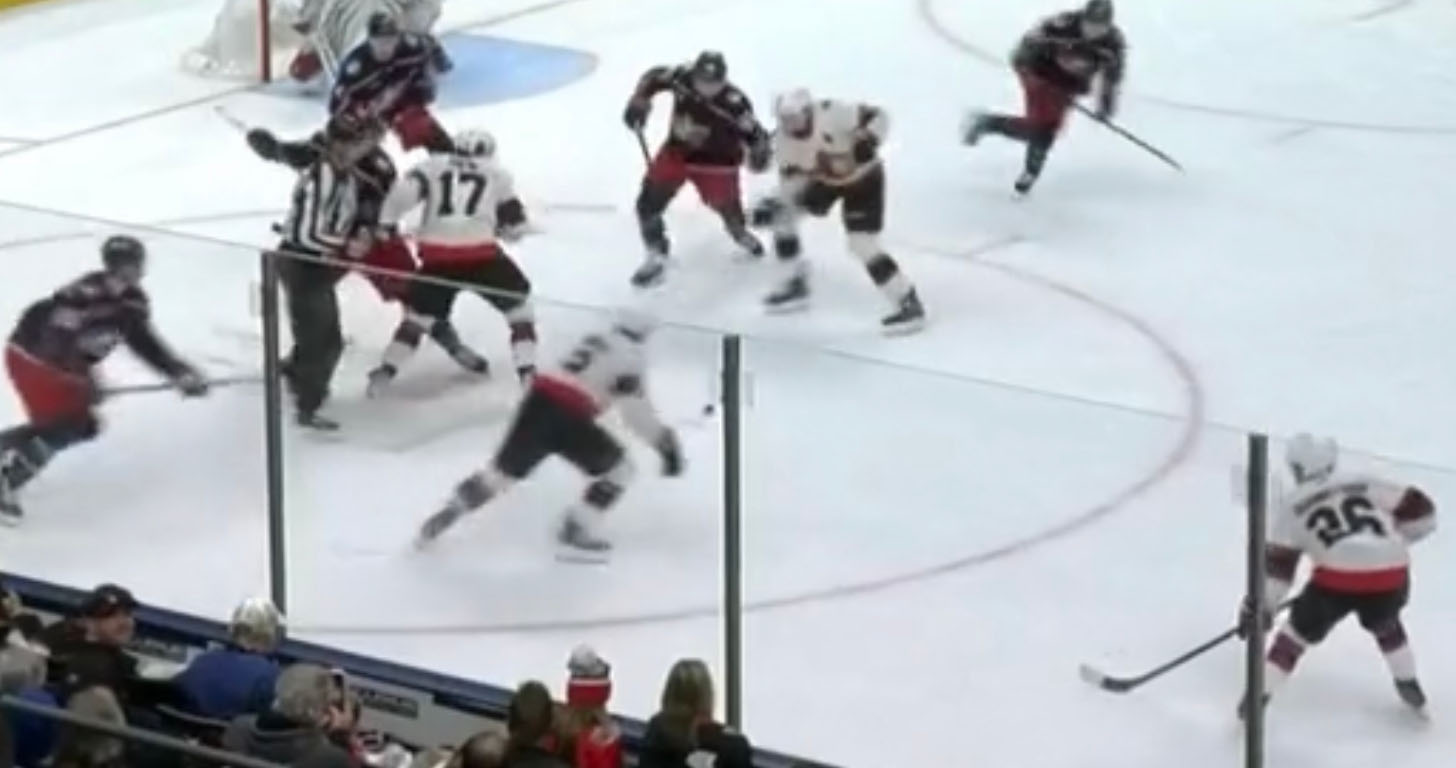
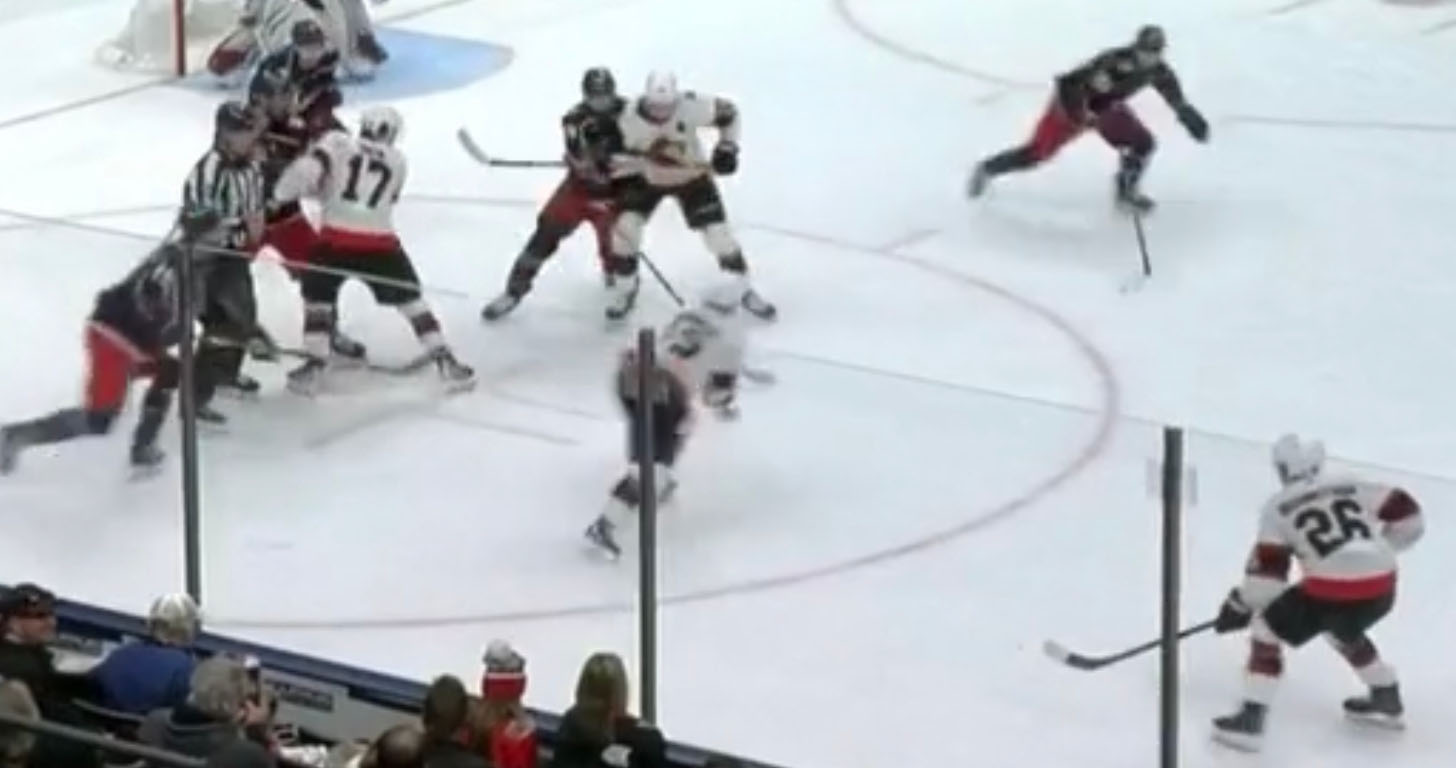
The ability to see the play unfolding and respond with the correct movement solution (perception-action loop) quicker than the opponent often separates hockey players. Winning 50-50 pucks can elevate a player’s ice time, opportunity, and chance to move to the next level. A player’s skating ability helps them ‘win’ more 50-50 pucks & is foundational to their ability to express themselves on the ice. For this reason, the ability to accelerate over short distances is vital for any hockey player.
Before we create a Progression to work on a player’s first three steps, let’s look at some of the key features that are necessary.
- Foot is pronated & externally rotated (player is on both of the inside edges of the blades & toes are slightly turned away from midline)
- Weight shifted to the balls of the feet
- Forward torso lean
- Arm drive coming across midline of the body
- Knee drive with the opposite leg pushing aggressively at roughly 45 degrees
When looking at a player’s first three (to 5) steps, the acceleration pattern starts with shorter strides and lengthens with each step. The skate blade is in contact with the ice surface longer than sprinting/accelerating on land; this means that quality of the push matters more than how many strides you take early in on-ice acceleration. Better skaters create powerful hip abduction forces (moving the leg away from the body) when pushing into the ice. Skate placement, upon recovery, is close to in line with the shoulder. This minimizes the time for the leg to be placed back on the ice while maximizing the power from each subsequent stride.
Acceleration, like working on your snap shot, is a skill. Give players plenty of rest between these efforts and use some visual feedback (from an Iphone) so you can look at each stride and analyze key performance indicators like the direction of the push, foot placement, arm drive and torso lean.
The group Altis recommend A Kinogram Method (for sprinting) which is at its core is an Analysis Method. Without getting into too much detail, it involves taking a video of the player accelerating from the side view from a set distance. When looking at the frames, I suggest starting with 3 key areas:
1. The double support phase (both skates on the ice)
2. Propulsion Phase (push off) Right leg
3. Propulsion Phase (push off) Left leg
Watch the video in slow motion and focus on these 3 phases of acceleration. It can be a very useful method to teach & look at different trials throughout the training process.
OFF-ICE Exercises to Develop a Stronger and More Explosive First Three Strides
Lower body strength is a major driver of on ice acceleration. Both the vertical jump & single leg broad jump are correlated with faster acceleration on ice. The following are ways to create leg strength and power that will translate onto the ice.
Skater Squats
- add Dumbbells and bands above knees
- paired with single let broad jumps (3 repetitions with each leg)
Landmine Split/Single Leg Squat w/ Knee Flexion Paired with Countermovement Jump
- 4 - 6 Repetitions
- 3 Repetitions
Skater Bound (45 degree) & Stick Paired with Continuous Skater Bounds
- 10 - 15 yards 3 Repetitions
- 10 - 15 yards 3 Repetitions
10 yard accelerations
Do 6-8 reps with minimum 60 seconds rest.
Hill Accelerations
Find a hill that allows you to do a full sprint for 6 - 8 seconds. Do 6 - 8 repetitions with a minimum of 60 seconds rest.
Additional Resources
Here are more resources that can help you or your players develop a faster, stronger, more explosive first three strides over the off-season:

